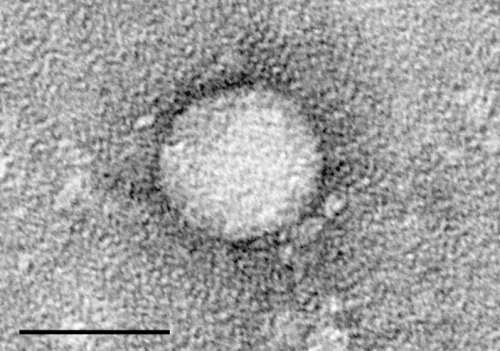New method developed for non-invasive risk assessment following hepatitis C recovery

The chronic viral inflammation of the liver that occurs in hepatitis C results in the formation of inflexible scar tissue in the form of fibrosis/cirrhosis of the liver. This impedes the flow of blood through the organ, with resulting hypertension in the portal vein. In the majority of cases, this is associated with fatal complications.
The research group led by Mattias Mandorfer and Thomas Reiberger from MedUni Vienna’s Division of Gastroenterology and Hepatology has already demonstrated in previous studies that, in a majority of hepatitis C patients, portal hypertension also reduces once the viral infection is beaten, and this improves the prognosis. Up until now, complex invasive investigations were required to identify whether this would apply in any specific case. Georg Semmler, from the same research group, has now developed a simple, non-invasive algorithm for estimating portal hypertension and predicting complications in patients following recovery from hepatitis C.
Hepatitis C is a common viral infection of the liver, which, up until a few years ago, required months of treatment with interferon injections and additional drugs. The recovery rates were low and serious side-effects common, especially in patients with advanced liver disease and portal hypertension. Today, hepatitis C is treated with antivirals, which are largely free from side-effects and can cure more than 95% of all patients within a period of only eight to 12 weeks.
Although portal vein pressure generally falls in people who have recovered from hepatitis C, portal hypertension can nevertheless persist, leading to further complications such as internal bleeds from varicose veins in the esophagus (variceal bleeding) or the development of ascites. The risk of these complications can be determined by invasive measurement of portal pressure (in the form of hepatic venous pressure gradient measurements), as is shown in a paper recently published by Mattias Mandorfer. However, measuring HVPGs is a complex and ultimately an invasive procedure that can only be done by experts.
The research group at the Department of Medicine III (Division of Gastroenterology and Hepatology/Head: Michael Trauner) has now developed an algorithm based on non-invasive tests that can estimate both the severity of portal hypertension and also the risk of complications following recovery from hepatitis C. This highlights the global pioneering role of MedUni Vienna researchers in the field of hepatology.
The algorithm is based on a widely available ultrasound technique that measures liver stiffness and on routinely available blood tests (von Willebrand factor antigen/platelet count) and also shows high diagnostic and prognostic value in external confirmatory studies. “Improved risk assessment will enable us to give a large number of patients the all-clear so that they will not need as many onerous check-ups. It will also be possible to identify high-risk patients, who need particularly close monitoring,” explain the study authors.
Source: Read Full Article


